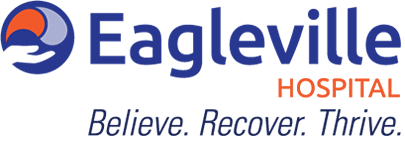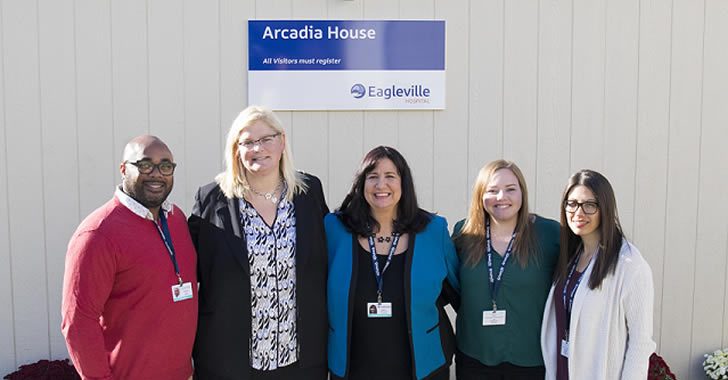Arcadia House Program Opens New Doors for Treatment
By Patrick Smith (patricksmith719@gmail.com)
In an age of personalized healthcare, treatment and therapy for patients with drug and alcohol addiction must move forward with precision. While traditional remedies and tactics will remain useful, more nuanced approaches may enhance a treatment facility’s repertoire and, more importantly, improve patient outcomes.
Eagleville Hospital has recently announced the opening of the Arcadia House Program, an innovative step forward into progressive substance abuse treatment. The new program, which is available to post-detox patients, concentrates its reach to a very specific, target-age demographic — males in Montgomery County, age 18 to 26. This is considered to be a transitional age demographic, one that is at high-risk and susceptible to overdose.
Opioid Epidemic
Arcadia House was born of a request from Montgomery County to address the opioid epidemic that has emerged within its young-adult population. More than a local problem, opioid addiction has sounded a crisis alarm across the nation. The National Institute on Drug Abuse (NIDA) warns that “prescription opioid pain medications such as Oxycontin and Vicodin ”¦ are currently among the most commonly abused drugs in the United States. Research now suggests that abuse of these drugs may open the door to heroin abuse.”
And according to a December 2016 report from the Centers for Disease Control (CDC), “Heroin is on the increase among men and women, in most age groups and within all income levels ”¦ In particular, however, heroin use has more than doubled in the past decade among young adults aged 18 to 25 years.” The CDC also notes that as heroin use has increased, so have heroin-related overdose deaths: Heroin-related overdose deaths have more than quadrupled since 2010. From 2014 to 2015, heroin overdose death rates increased by 20.6%, with nearly 13,000 people dying in 2015. And in 2015, males aged 25-44 had the highest heroin death rate at 13.2 per 100,000, which was an increase of 22.2% from 2014.
Stepping Up to the Challenge
Clearly, the need to combat this issue is pronounced; the Arcadia House Program signifies that Eagleville is up to the challenge. The program will take a unique, specified approach with its treatment methods, explained Eagleville Clinical Coordinator Mary Foley. “We’re using a different therapy program called Prime Solutions,” she said. “It uses videos and interactive tasks with the clients. Also, we’ll be utilizing a lot of mindfulness and acceptance therapy, along with activities that are integrated throughout the campus.”
This approach is a change of pace from a more rigid and traditional style of drug and alcohol therapy, and is aligned with Arcadia House’s aim to embrace methods that will be more personalized and effective for the younger demographics.
“What’s different, and what really appeals to me, is our tier system,” commented Arcadia House counselor Charles Clark of the more progressive and beneficial treatment methods. “We’re going to do things differently than the rest of the hospital is currently doing. We’re combining several treatment modalities with technology to keep people’s interest level high. Talking alone or too much psychoanalysis may end up boring some people; treatment doesn’t have to be bland.”
Substance abuse, often perceived to be a purely physical problem, also requires a comprehensive mental approach. Innovative measures inherent in the new program will ensure that three primary objectives are met for patients: an increased feeling of selfworth, an increased sense of self-discovery and an increased sense of inner wellbeing.
Alyssa Snyder, Children’s Program Director for Montgomery County’s Department of Behavioral Health and Developmental Disabilities, commented on the mentality of younger patients. “I think sometimes when they see adults who have been in treatment for a long time, it’s a bit jarring for them,” Snyder said. “They don’t know the full stories of those folks, and the outlook may not appear hopeful. They really need to be inspired, and motivated to realize that they can complete the treatment course, and know that this does not have to be a lifelong process. They must see their goals become a lot more attainable.”
New Concepts in Space and Staffing
One of the key components of the Arcadia House program is the dedicated space itself, and the staff that will be working within it. The unit is a modular concept, and the smaller size (16 beds total) is predicted to help facilitate a sense of community for both the patients and staff. This personalized approach should, in turn, allow the treatment methods to be optimized in their effectiveness.
From a purely logistical perspective, the actual construction was completed by Three Point Contracting quickly and without a hitch. Construction began on Aug. 22, 2016, and furniture had already been put in by the second week of October. In all, the entire process took eight weeks, and the job was finished without any blemishes. Project Manager Tim Keene praised not only the combination of promptness and quality, but also the ease of coordinating with the township, saying they were “great to work with.” Such an effective and problem-free construction process allows the program to begin on time and prevents complications.
Staffing within the unit also breaks from the norm. “One of the big things we decided to do to make this unit different from every other unit was to draw all of the staff from our counseling staff,” said Denise Kitson, Director of Counseling Services at Eagleville. “In other units, for example, you may have nursing staff and nursing assistants who are all-day caregivers bring patients to lunch or dinner. Instead, we are utilizing only counseling staff. We want to try something very different and determine whether or not we see an impact.”
She also described the veteran makeup of the staff, and explained that seasoned providers are beneficial. “Most of the staff we’ve hired has been with Eagleville for a long time. One of our main therapists has been here for 11 years on our detox unit, so he knows the population very well,” Kitson said. “The case manager has been with us for two and a half years, and prior to working here, she worked solely within Montgomery County doing case management. So, a lot of our house managers and staff members are Montgomery County people, and they know the resources well.”
View from the Boardroom
The optimism surrounding the Arcadia House Program is shared not only by the staff, but also by Eagleville’s Board of Directors. The board had recognized a distinct need for a program targeting a young age demographic in the wake of well-documented opiate abuse in recent years. “This 18 to 26 age demographic is at the stage of life where recovery can lead to very good outcomes,” said board member Victor Lidz. “This is a hopeful program. The idea is that people will do well even if they’ve been in a dangerous situation before.”
Fellow board member Hal Shanis explained that the program aims not only to remedy patients’ present drug addictions, but also to prepare them to cope with the realworld environment they will return to after treatment.
“This program is consistent with Eagleville’s philosophy and orientation since its inception,” Shanis said. “That is, we treat the whole person and give them the tools to take to the community and use to resist environments where substance use heavily occurs. It’s not so much a clinical, sterile solution in a closed environment, but rather it relates to what they’ll see when they go back to Montgomery County. They can remain at lower risk.”
Eagleville Hospital Board Chair Sharon Harris added that Eagleville has had a history of helping people and communities at its core, and said this program is just another step in maintaining that important objective.
“Eagleville has followed a long tradition of providing service to the community,” Harris said. “Montgomery County identified a problem, and we offered help. It was quick ”” less than a year ago this idea came into being ”” and today we have this wonderful new facility available. Part of our tradition has been adapting to whatever is going on in the community and trying to be helpful. When we talk about helping our patients, we also talk about helping the families, as well as the community. This is what we always set out to do with any project like this.”
Such enthusiasm from the board is indicative of the general view of the new program at Eagleville and its goal to serve a new generation of patients. The dynamic new Arcadia House Program is the tangible result of a productive team effort involving contractors, staff, coordinators and Montgomery County, all focused on addressing a pertinent opioid problem within today’s young adult demographic and devising a plan to rectify it.
Arcadia House promises to leave a progressive footprint on the changing landscape of substance abuse treatment. Leveraging alternative therapies and point-by-point, personalized objectives for its patients, the program has an opportunity to position itself on the cutting edge of treatment and open the door to even more innovations down the line. As for the here and now, Arcadia House is focused on helping patients any way that it can, which is the very heartbeat of Eagleville Hospital’s mission.

